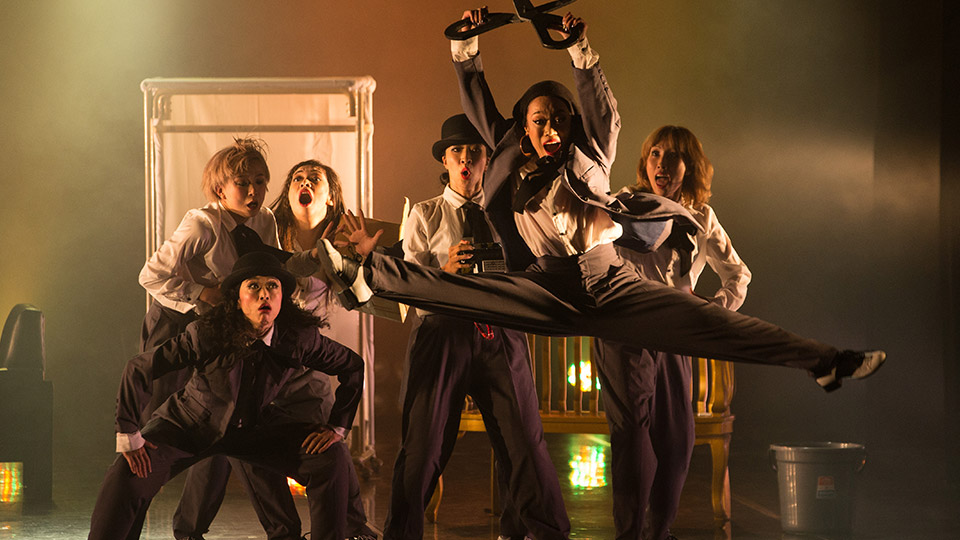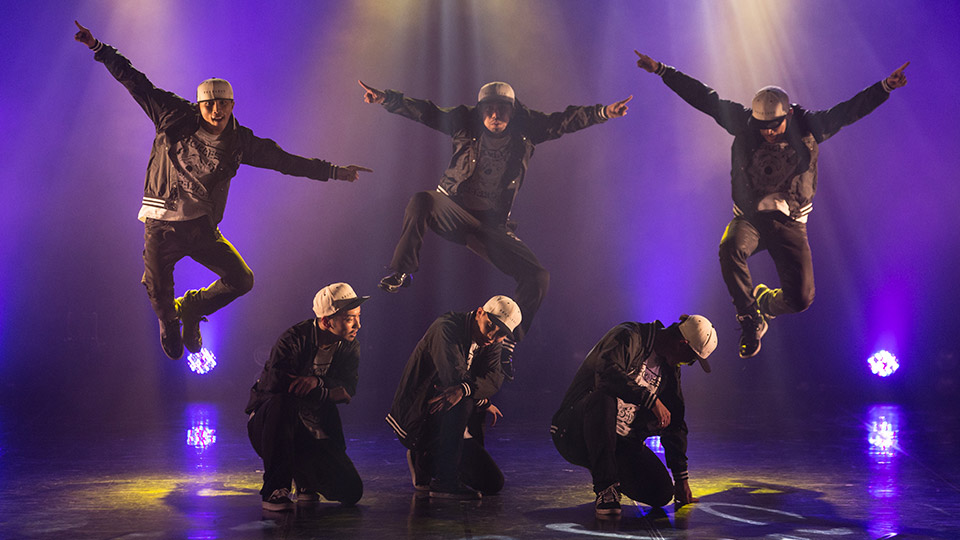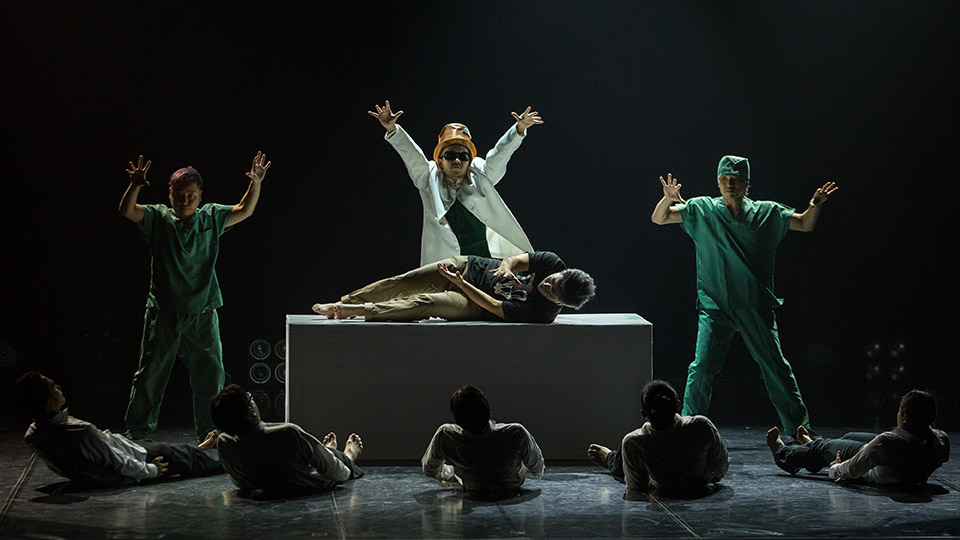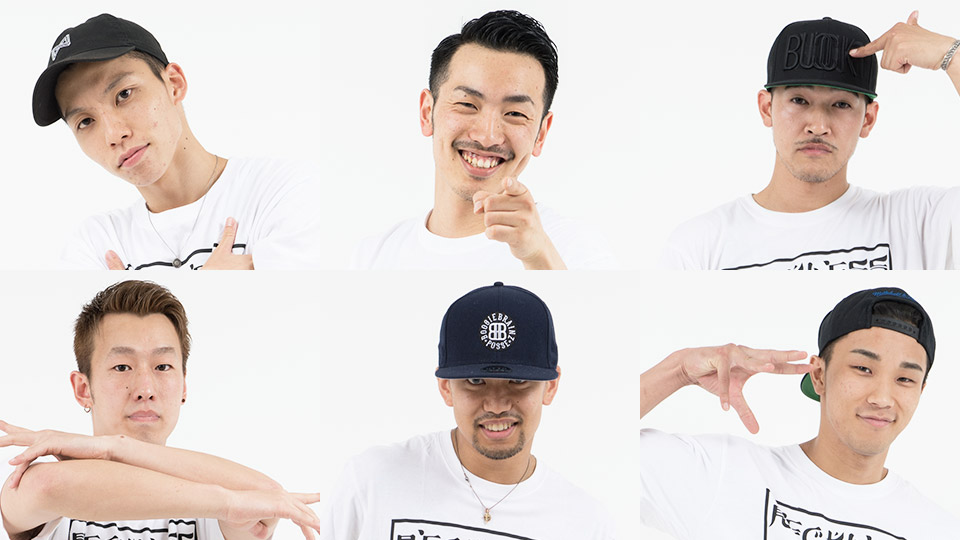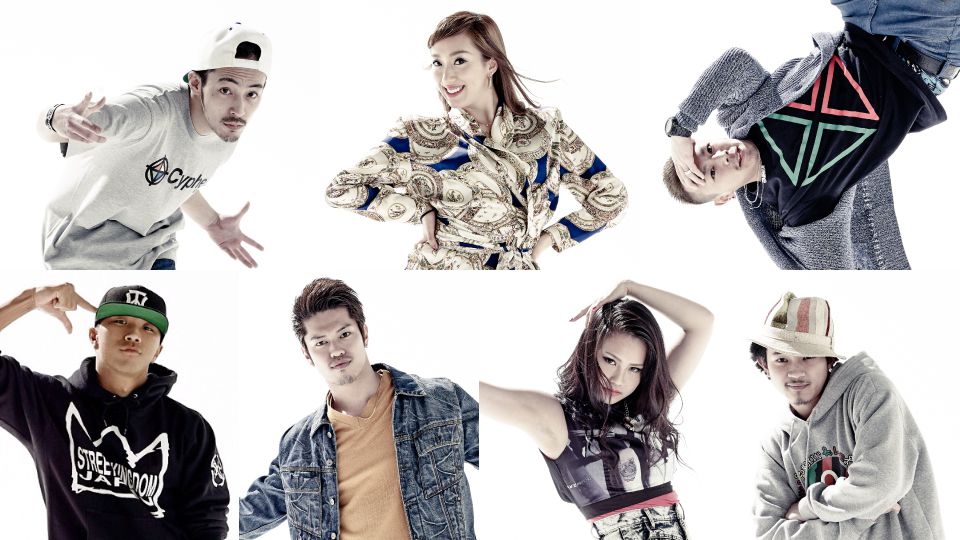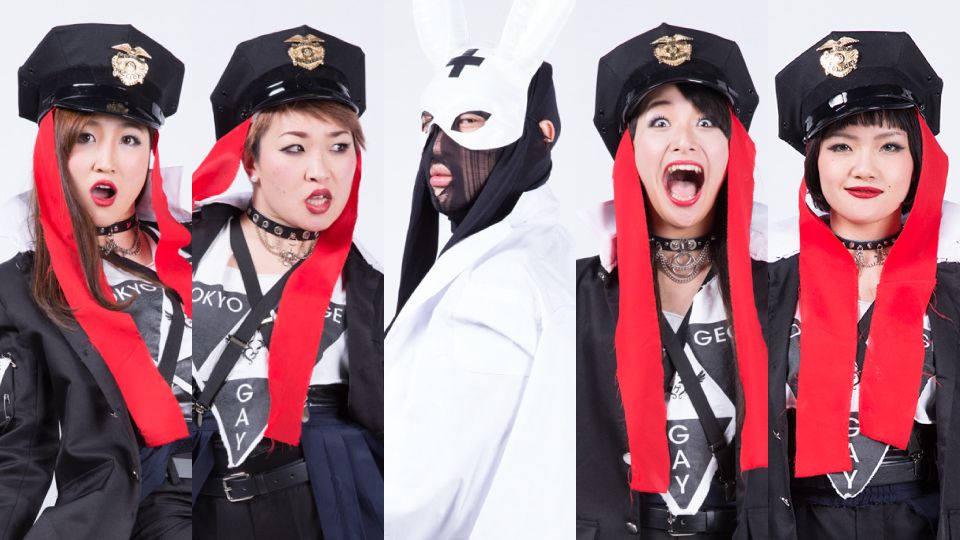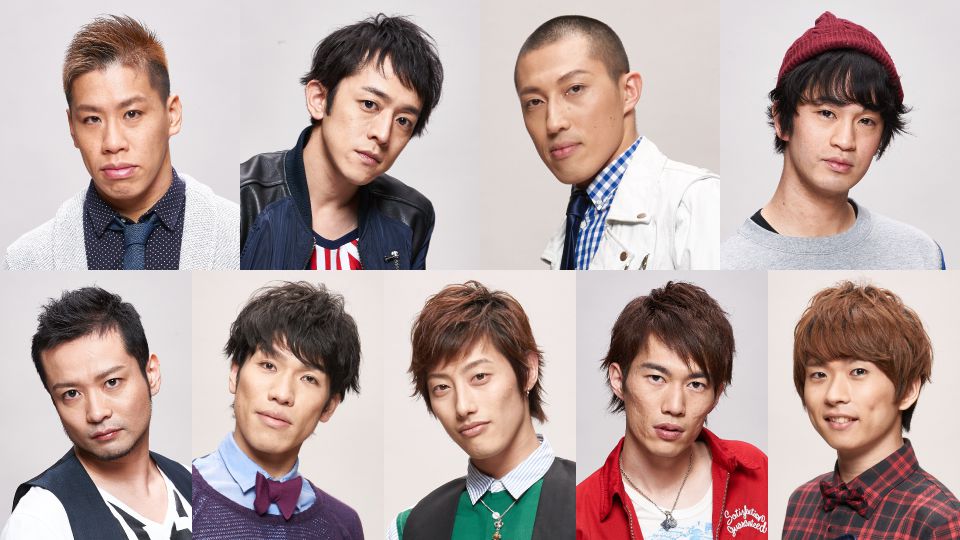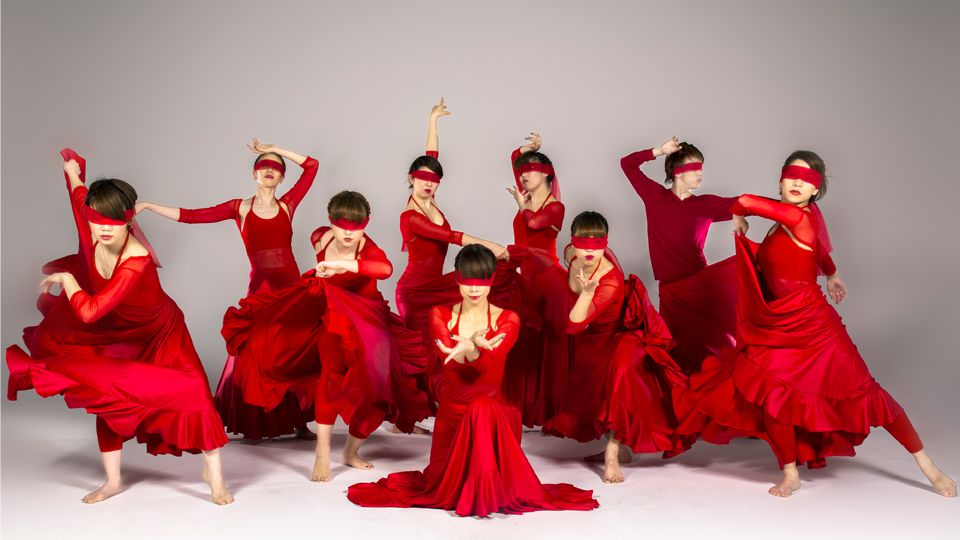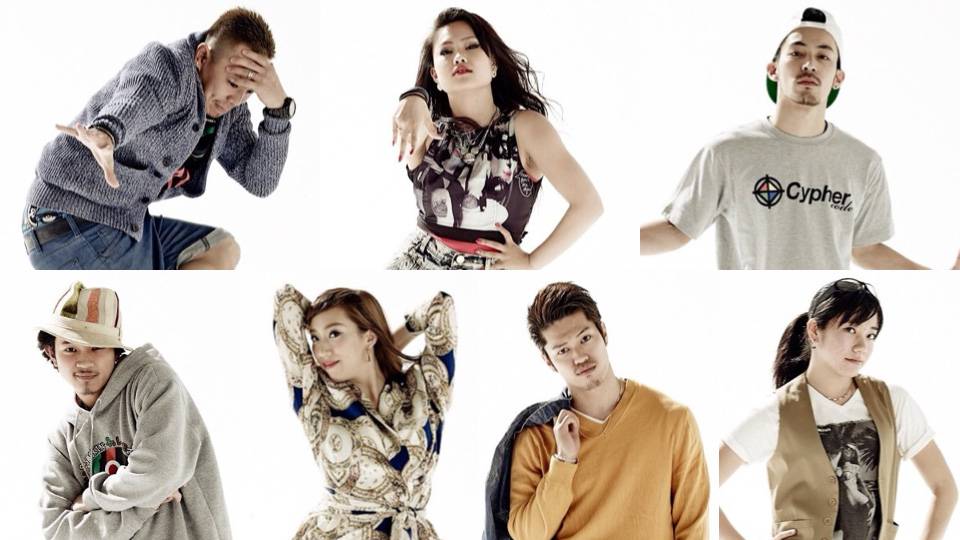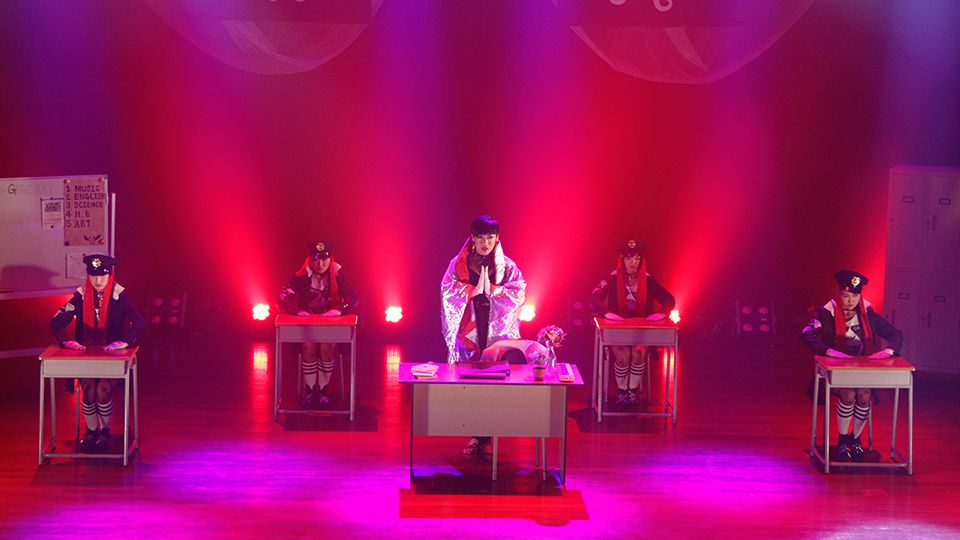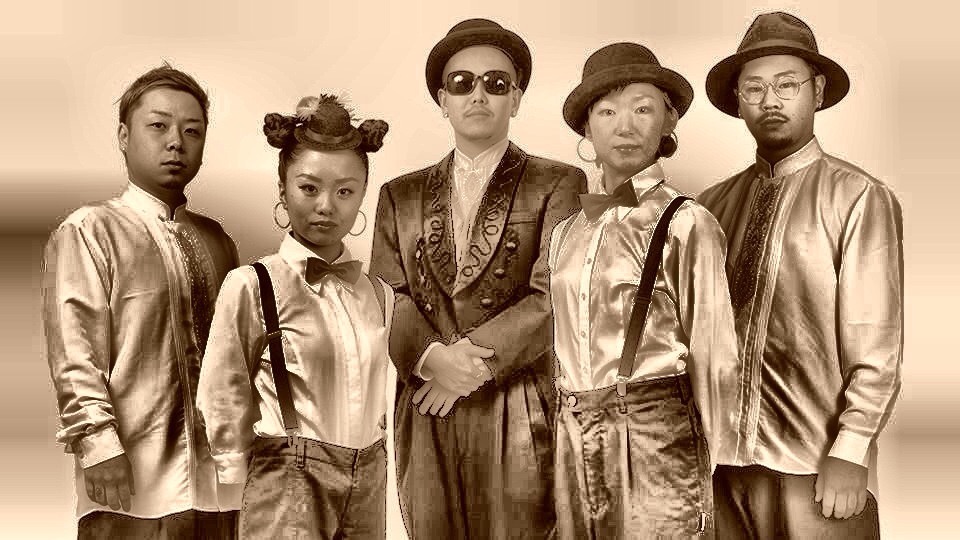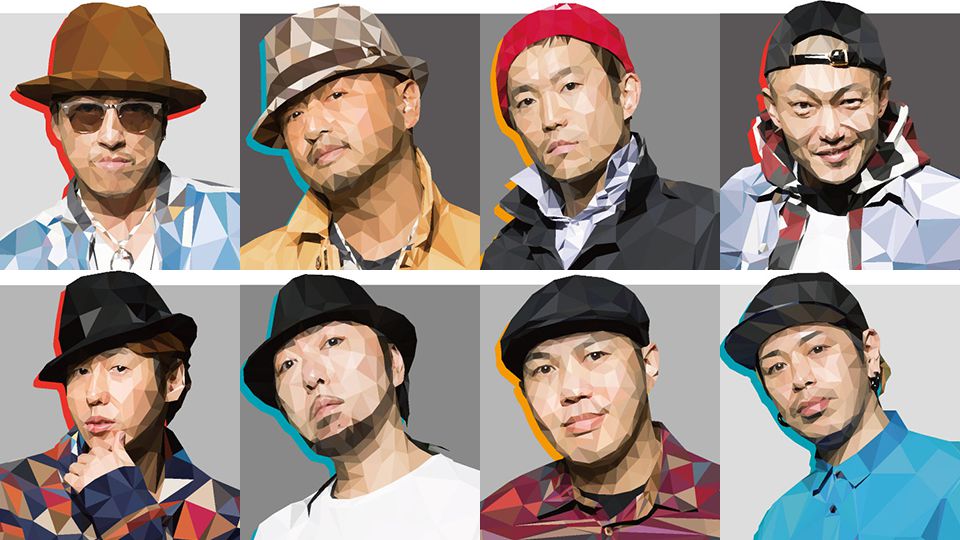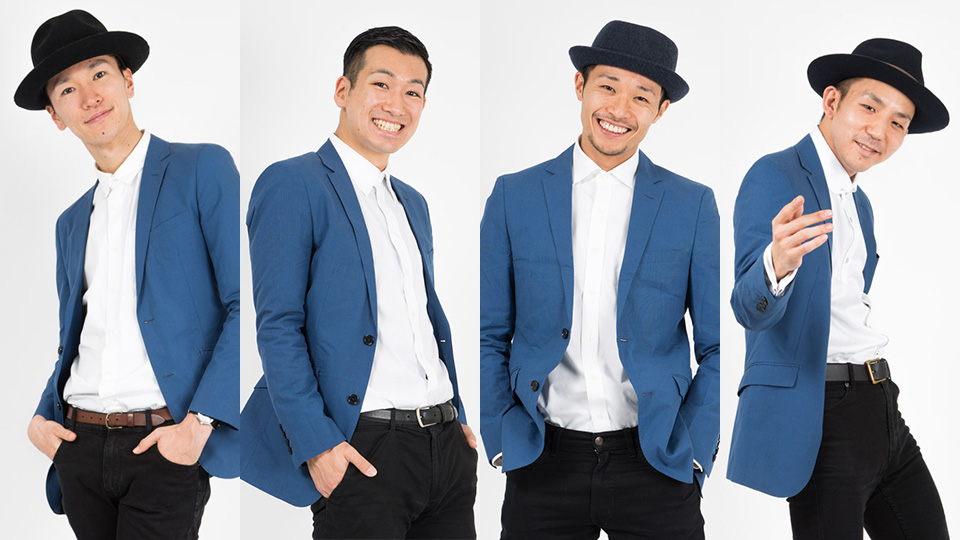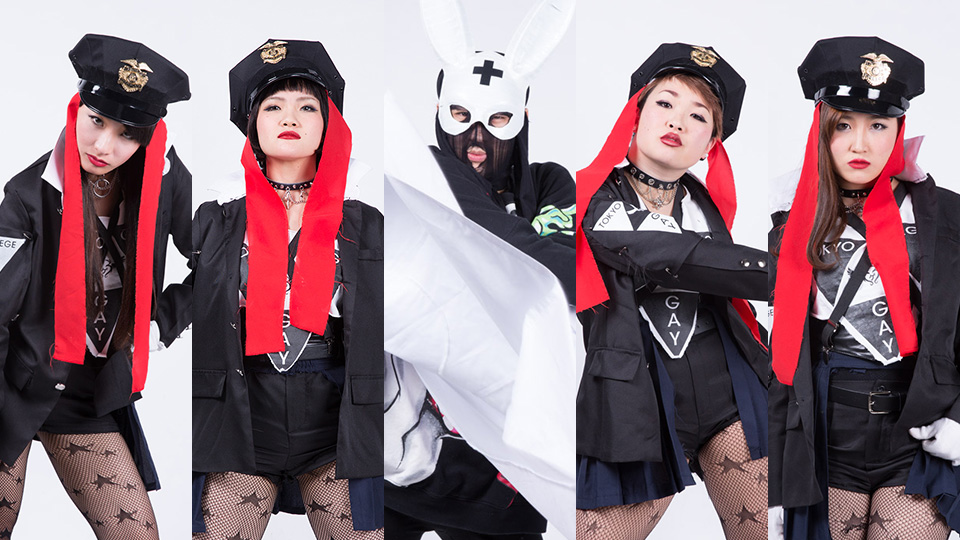
DANCE DANCE ASIA – Bangkok, Thailand (2015/03)
Post-Event Interview
UMEBOU / The joy of communicating with audiences and getting reactions in real time!
How did audiences in Thailand react to the performance by UMEBOU, who present narratives with themes of love and friendship set to J-Pop music easily graspable by Japanese viewers? Here group leader Imagine Itou talks about how the Bangkok performance went and the group’s future plans for overseas activities.

What kind of experience did you have during the Bangkok tour?
Ito : Well, I think this time of DANCE DANCE ASIA is about cultural exchange and interaction, with people in lots of different Asian countries seeing Japanese dance and getting inspired by it, and with us, the Japanese dancers, getting inspired as well.
I had been concerned for a while about how our performances would go down overseas. After all, the music we use is J-Pop, and the settings and narratives are ones that are familiar to Japanese audiences, but how accessible is this music and culture to people in other countries? This seemed like a great opportunity to find out. We were glad to have the chance to participate, and hoped it would help us grow as artists.

How was the audience reaction?
Ito : It was more straightforward than with Japanese viewers! If something was fun, they raised their hands in the air and got into the groove, and if something surprising happened they let out exclamations. Even during scenes that were building the narrative, like with foreshadowing or conflicts between characters, they would react to everything, and so we knew in real time that the message was getting across, and danced confidently in that knowledge.
We had taken care to use relatively simple storylines that would be comprehensible to overseas audiences, and we were able to get the reactions we were looking for.

Did you also manage to get your primary message across during the workshop?
Ito : In Japan, I work as an actor as well, and I’ve taken part in acting workshops. Based on my insights about workshops, I felt like what I wanted to communicate here was the importance of emotion, the emotions that are generated when you’re dancing. Usually when you dance, you do the choreographed steps, and then you sort of layer emotion on top of that, but here we were after the opposite process, dancing from your emotions. Like, you feel a certain way about another person, and that makes you dance with your arms extended widely outward, or something is worrying you, so you clutch your head.
In most dance workshops, people try their very hardest to do the steps as
they’re choreographed and to follow the instructions they’re given. This
was different, though. It was OK if people forgot the steps, as long as
they were invested in it emotionally. Even if you skip some steps, there
will be continuity as long as you keep the emotion going, and the
audience will connect to the dancers on stage.
That was the main point we tried to convey in the workshop.
The participants were having a great time, taking on new challenges enthusiastically with no holds barred, and we were very happy about that.

What do you think of the dance scene in Japan today?
Ito : It’s a funny situation right now, because dance is so popular that it appears satisfactory on the surface of things. Dancers can make a living just by teaching lessons, and if they have regular students and choreograph dance numbers for them, they can keep on doing their thing indefinitely, appearing in events all over that are taking place every night of the week.
I’m an actor, so I’ve seen the world of acting, which is a lot tougher than that of dance. Aspiring actors polish their craft from morning till night, then work at part-time jobs from night until morning, and go right back to acting lessons and so forth, without sleeping. But a lot of them don’t make a penny off of acting. It’s no wonder so many people quit.
There isn’t a lot of funding for the performing arts, or any arts, in Japan. But without that funding, creative people can’t make a living. We need to change things, so that talented performers in this situation will be rewarded for their efforts. I think we are just starting to enter a phase where we’ll tackle this challenge.

Tell us about the outlook for the future.
Ito : Our group is working on putting together performances, and we’re doing shows around 90 minutes long twice a year or so. It’s going to be tough to keep doing this in Japan, though, mainly for financial reasons. We want to make UMEBOU into a team that can keep performing indefinitely.
The reality in Japan is that just doing great work is not enough to enable you to expand your range of opportunities to present it. Quite the opposite, most people end up quitting because they lack these opportunities. We want to change that somehow.
But that is something we can’t do on our own. What we do hope to do is put together solid performances, polish and hone them, and obtain the cooperation of both older mentors and younger kids in the dance scene so that we can keep on performing for as many people as possible.

If, through this tour, someone in Southeast Asia contacted you with a proposal to collaborate on something, how would you respond?
Ito : That would be great! It would be fantastic if a movement like that would arise. It would also be great if some dancers capable of “sparking a chain reaction” would visit Japan as well. I’d like to interact more with people from elsewhere in Asia.
Our style is something unique to Japan, I think. I was happy to hear from the audience and interpreter that the performance reminded them of manga or anime. Our experience in Bangkok made me even more eager to see how our work strikes people from completely different cultures, and I hope we can visit other countries as well.
Posted – 2016.08.26
This post is also available in: Japanese















